How to get to Patagonia? There are many different travel routes to Patagonia. Each one has its own special fascination.
Traveling from Buenos Aires to Patagonia, you see a stunning collection of sights from that colorful cosmopolitan capital city to the massive glaciers of southern Argentina to the southernmost city in the world, Ushuaia, Argentina and beyond.
Traveling to Patagonia on the Chilean side is equally magical. You’ll see some of the world’s most majestic mountains, The Andes, among other natural splendors.
Getting to Patagonia can be a fascinating journey. Let’s explore the different routes.
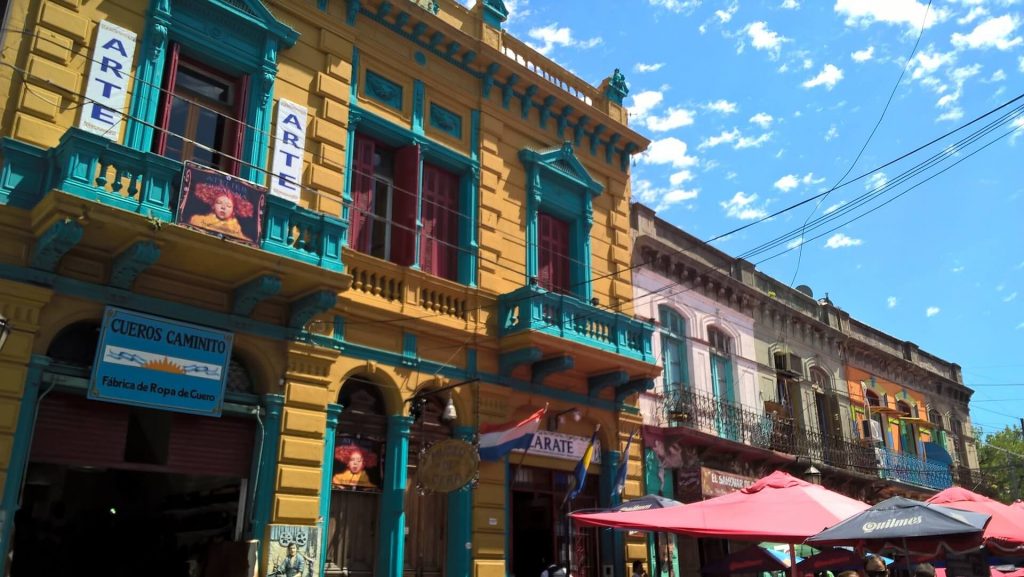
How to get to Patagonia: The many different ways
In planning a trip to Patagonia, you need to consider how much time you have. Do you want to spend all your time in Patagonia, or do you want to travel to Patagonia at a leisurely pace stopping at the many fascinating points along the way?
If you want to get to Patagonia in one day, the best way is to fly. Flying to Patagonia from Chile or Argentina is easy.
Most trips to the Patagonian areas of Argentina and Chile begin by flying from one of the major cities like Buenos Aires or Santiago, the capital of Chile.
Aerolineas Argentinas, Argentina’s main airline, has regular flights from Buenos Aires to Patagonian cities further south.
Lan Chile, the Chilean national airline also has frequent flights from Santiago, Chile to Patagonia.
Airports in Patagonia to fly into include: El Calafate Airport, San Carlos de Bariloche Airport, Ushuaia Airport, Carlos Ibañez del Campo Airport in Punta Arenas, Teniente Julio Gallardo Airport in Puerto Natales, El Tepual Airport in Puerto Montt.
From Buenos Aires to Patagonia
Traveling to Patagonia from Buenos Aires is a good idea. Spend a day or two in Buenos Aires then continue your travels to Patagonia.
Colloquially known as BA, Buenos Aires is one of the great capitals of the world and one of my favorite cities. It is a top-notch cultural center brimming with museums displaying native and international fine art, making a visit to Buenos Aires one of the best things to do in Argentina.
Buenos Aires is divided into several neighborhoods, each with its own particular vibe; from the trendy and cool SOHO to the elegantly refined Palermo to the artsy port area of Boca, there is something for everyone in this fabulous city.
One particularly interesting spot in the Palermo neighborhood in Buenos Aires is the cemetery of La Recoleta, one of the world’s most beautiful cemeteries and a must-see for its stunning statuary and historical significance.
Buenos Aires. Seductive and cultured, sophisticated yet earthy, eclectic but with a strong identity, it never bores, seldom sleeps and invariably mesmerizes its visitors. Click To TweetWhen choosing a hotel in Buenos Aires, select the neighborhood first. Then check out these accommodation options in Buenos Aires.
The food in Buenos Aires is outstanding and tends to specialize in meats. A “parillada” or grill of several different cuts of meat and a bottle of wine is an ideal dinner selection in Buenos Aires.
You can even top that by combining dinner with a tango show at any of the club venues around town. The nightlife in Buenos Aires is one of the liveliest in Latin America.
Coffee culture in Buenos Aires is taken very seriously. The coffee shops are accommodating, sometimes luxurious and you can nurse a coffee for hours while you plan your day.
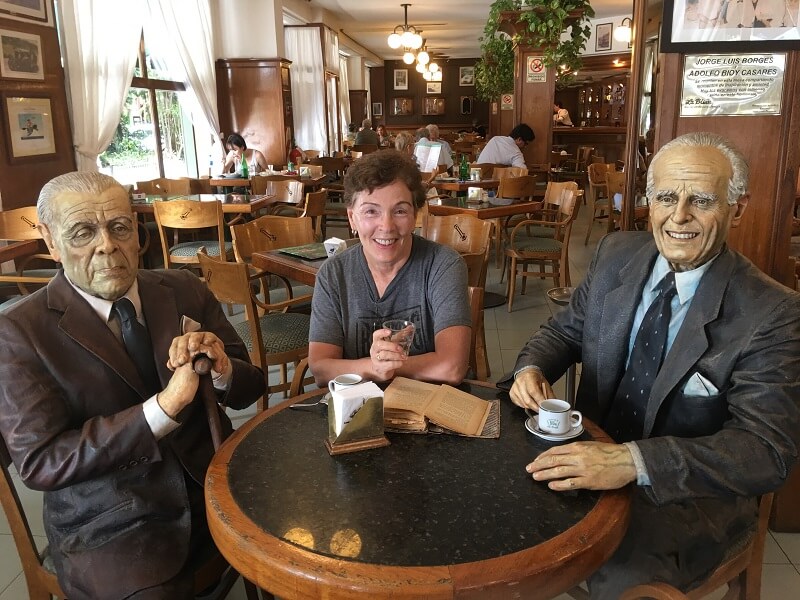
Buenos Aires is a great spot from which to start your visit to Patagonia.
Tip: Plan for four days including travel to enjoy BA.

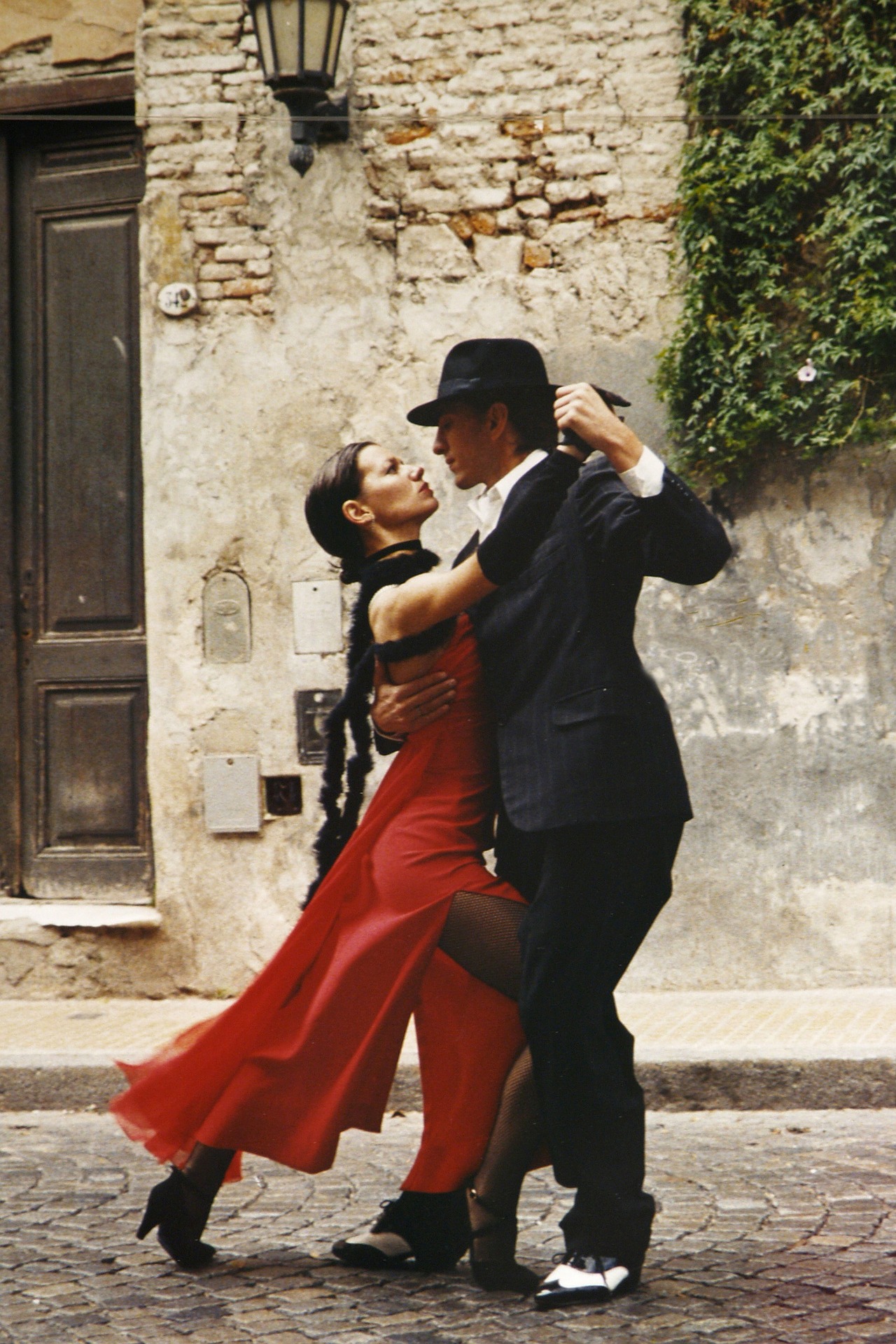
We had heard so much about the Argentine city of Mendoza that we determined to visit. We stopped in Mendoza on the way to Chile in a circuitous route to Patagonia.
Mendoza is one of Argentina's can't miss cities.
You can fly, drive or take a bus to Mendoza, a beautiful colonial city in northwestern Argentina which is also the capital of the country's important wine industry. This is one of the most important wine regions of the Americas.
Wine is the city's lifeblood with wineries ranging from sophisticated establishments to cottage industries in people's backyards. Everyone is involved.
The city has hundreds of wineries that have become an important tourist draw. A fun day activity is to visit several wineries and sample the wide variety of excellent wines accompanied by lunch in a welcoming vineyard.
One of Mendoza's more charming aspects are the five central plazas which were rebuilt after an earthquake destroyed a large part of the town.
These are tree-lined, shady squares built in the traditional Spanish style where the locals meet to stroll and enjoy the beauty of the fountains and sculptures.
If you've got the time to visit this wonderful city on your way to Patagonia. Don't miss it.
Tip: Three days including travel is a good amount of time to visit Mendoza.
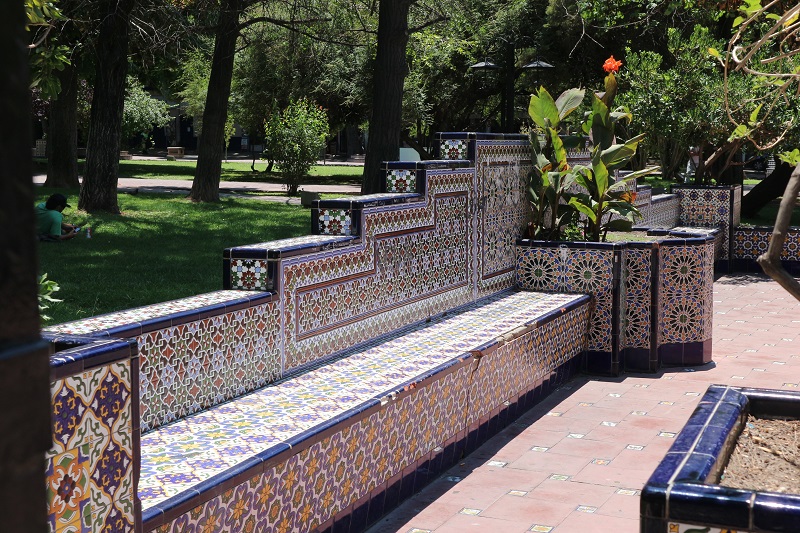
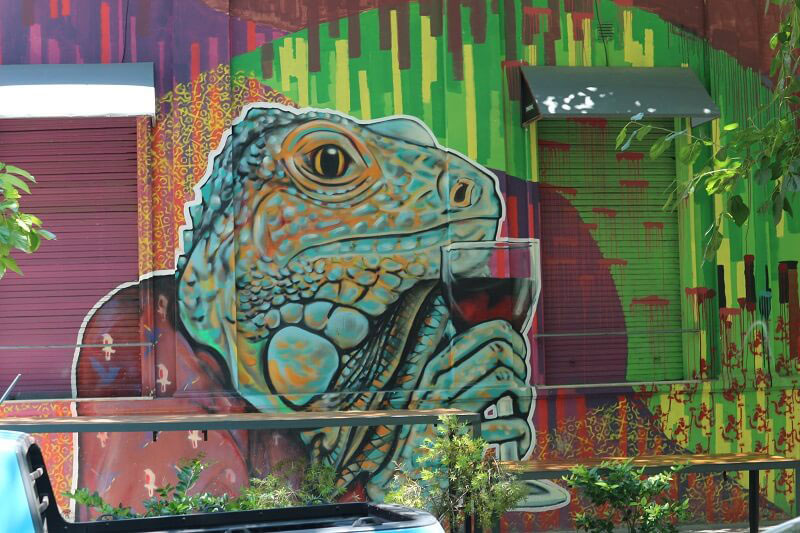
How to Get to Patagonia on the Chilean Side
Traveling to Patagonia by land on the Chilean side is well worth it if you are in the area and have the time.
Crossing the Andes Mountains by bus
From Mendoza, we decided to cross into Chile by bus. The distance separating Mendoza from Santiago is about 230 miles (370km), but since you’re crossing the second-highest mountain range in the world, the actual travel time is over seven hours.
Most people would fly, but what an opportunity to experience such a unique border crossing and seeing the Andes Mountains at close range!
I began my research at home on the internet. It turned out that purchasing bus tickets online before the trip was possible if they were purchased within 30 days of the trip.
After checking out several bus lines I settled on Busbud, a bus and coach reseller serving over 75 countries in multiple languages and currencies. I liked the clarity of Busbud’s website vs other sites.
Tip: Most buses are double-decker. Try and secure seats on the top level as the views will be awesome.
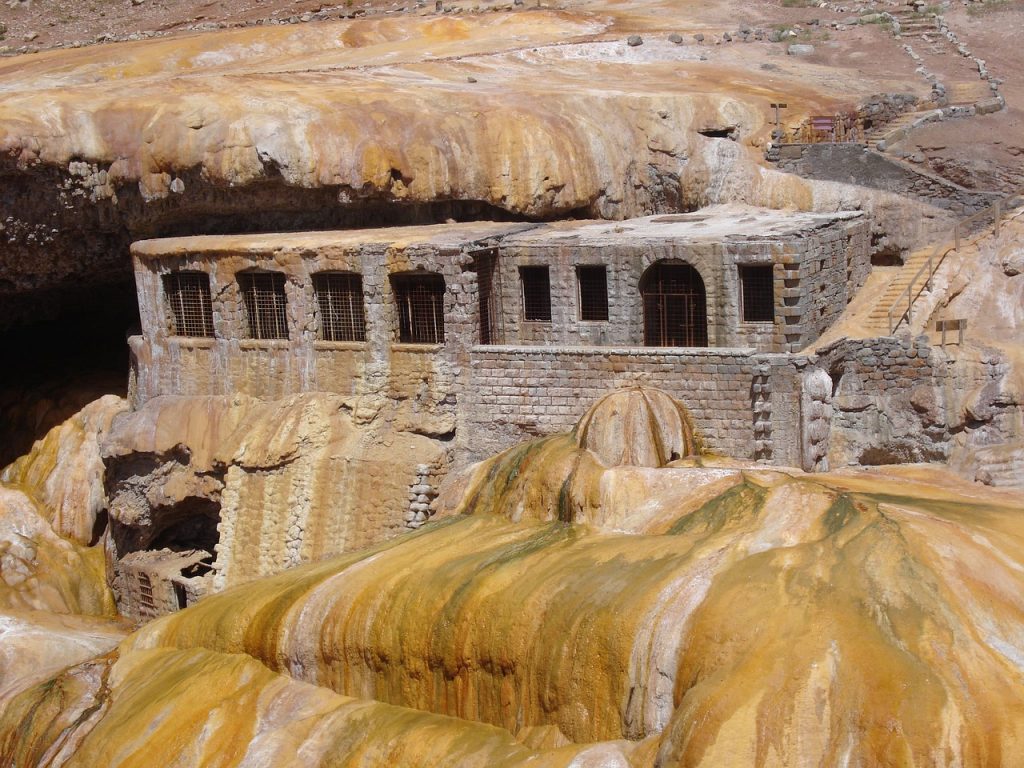
The central bus station in downtown Mendoza is noisy, crowded and hectic as are most bus stations around the world. The vendor stalls sell a variety of local food and the standard cheap tourist trinkets.
To board the bus, you must present both your passport and the ticket confirmation you received when you purchased your ticket online. That confirmation is your ticket.
To our delight, the bus had everything exactly as advertised; roomy, plush seats that turned into beds with pillows and blankets. Snacks were plentiful and lunch was tasty. Beverages were available throughout the trip.
The bathroom was adequate. The movies were silly but they’re sure to entertain children on a long trip.
Amazing views of the Andes mountains
The big draw, of course, is the views of the Andes. The Andes is the longest mountain range on earth at 7000 km (4,350 miles). The highest mountain in the range is Aconcagua at 6,961 m (22,838 feet).
Anticipation starts building after the bus leaves Mendoza and turns right heading directly into the Andes. After about twenty minutes, ears start popping and the bus is right smack in the middle of the spectacular Andes mountain range.
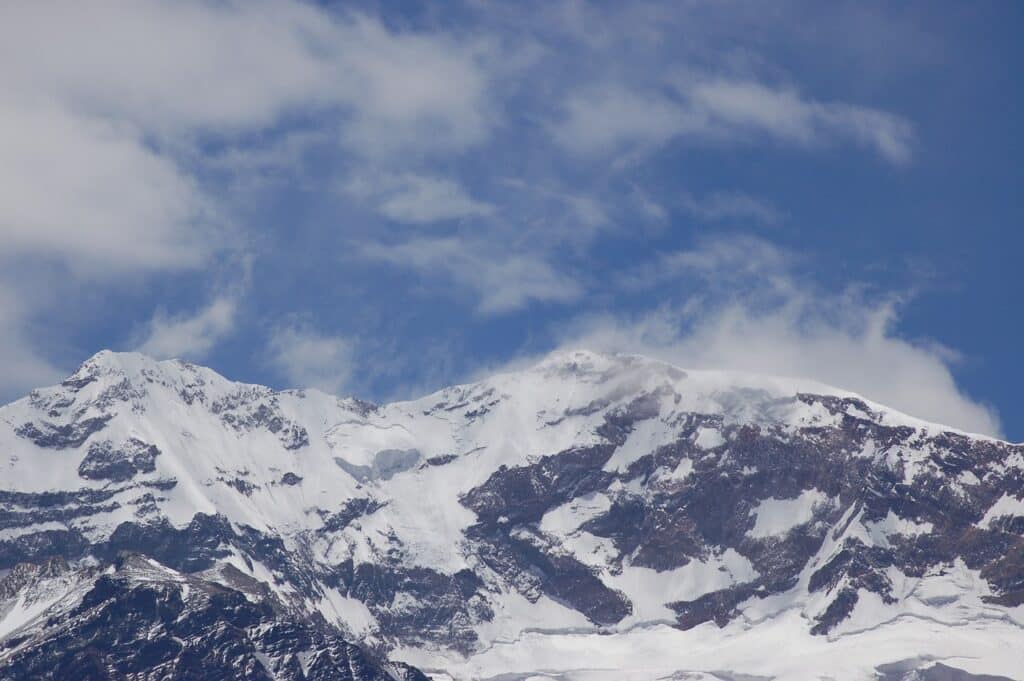
The views across the Andes mountains are stunning. You are surrounded by snow-capped mountains, deep gorges formed by rivers flowing over millennia, pristine mountain lakes, and thick pine forests.
The view is so impressive, it’s like watching a live National Geographic special from your private picture window.
All the while you’re saying to yourself, “Hey, I’m crossing the Andes.” That’s up there with seeing the Great Wall or the Egyptian Pyramids for the first time.
Besides the mountain views, you also see interesting sights like a natural bridge used by the native populations for centuries, herds of alpacas and lonely little cargo trains chugging away in the vast expanse.
The border crossing from Argentina to Chile is a long, disorganized ordeal. Passenger suitcases are searched and inevitably food is found and disposed of. There were very long waits for everyone to get through customs.
The views on the rest of the trip were so spectacular that the customs crossing was quickly forgotten. It is at this point that the bus begins to descend from the heights of the Andes.
Since the bus is coming from such a height – your ears will pop again- the only way down is via tight hairpin curves the bus maneuvers high above the base of the mountains.
It is so scary you almost don’t want to look but you are compelled to do so. As the bus continues to descend the topography changes from multi-colored rock formations to scrub with little rivers flowing down from the mountains to green temperate farmland. Each stage is beautiful in its own way.
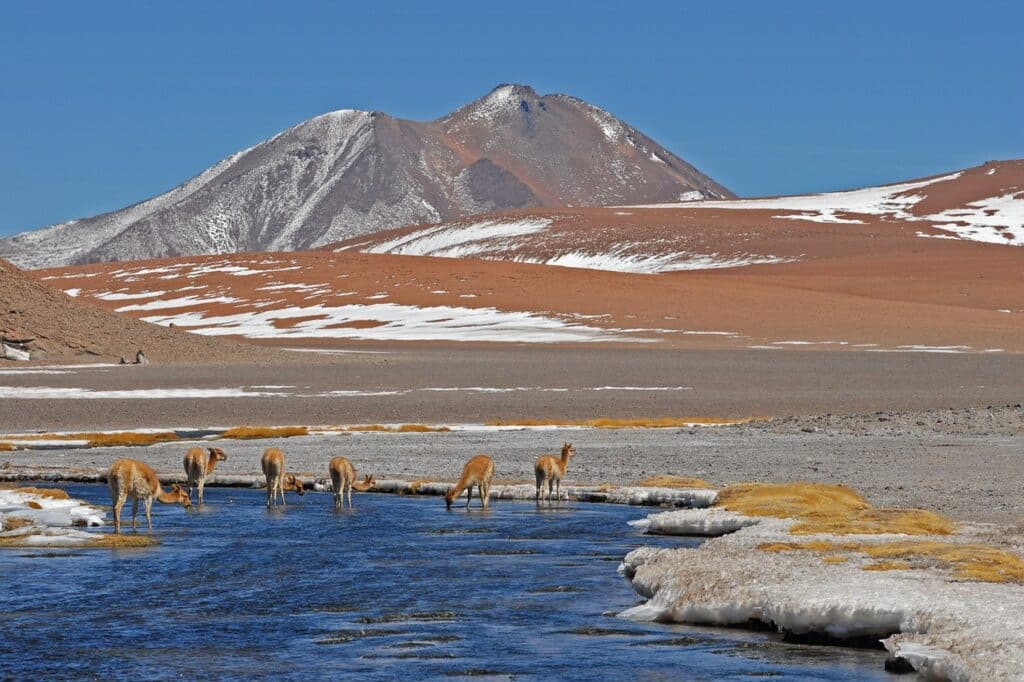
The trip from the Chilean border crossing to the bus terminal in Santiago takes another three hours. Upon arrival at yet another crazy-hectic, loud and crowded bus terminal head for a taxi stand or local buses and on to your next adventure.
The memories of your Andes crossing will stay with you for a long time.
Heading to Puerto Natales, a gateway to Patagonia
Traveling from Santiago, Chile to Patagonia involves an easy flight to Puerto Natales, the kickoff point for entering the Torres del Paine National Park, one of the gateways to Patagonia.
Puerto Natales was looking for an angle to exploit its proximity to the big tourist attraction which is the national park.
The town hit on the idea of becoming a foodie mecca and did a pretty good job of it with a slew of fine dining options. As long as people have to come through Puerto Natales anyway, they won't be hungry in the process.
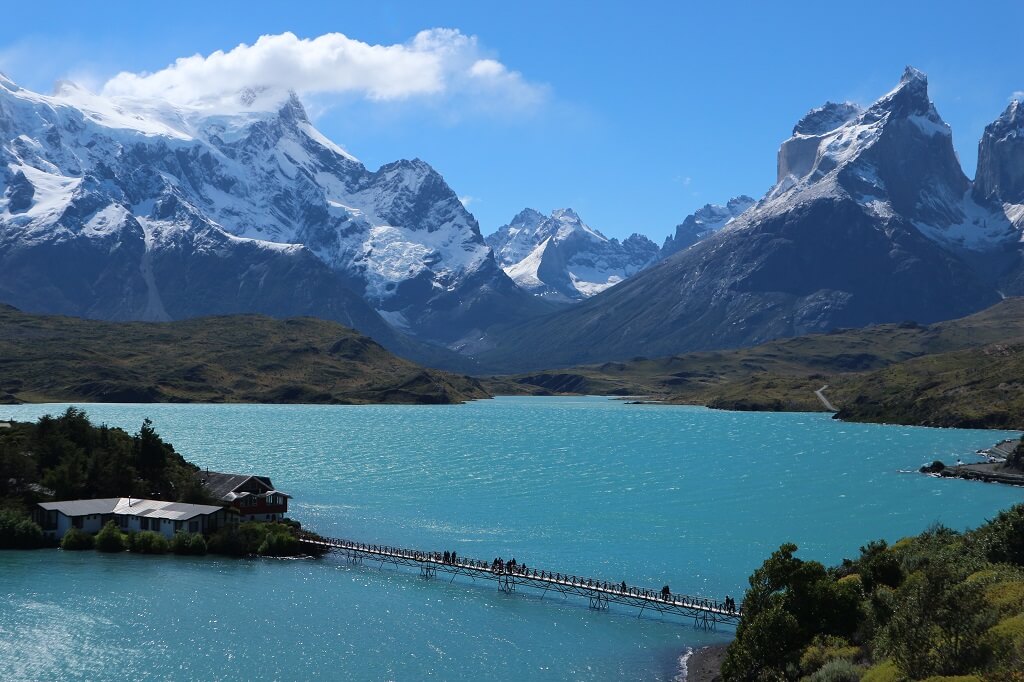
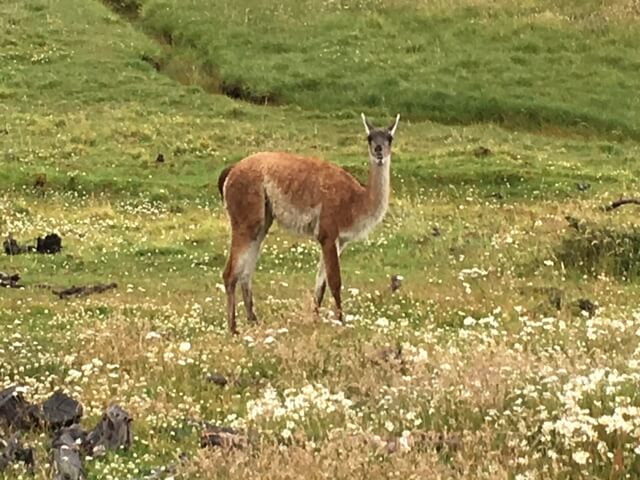
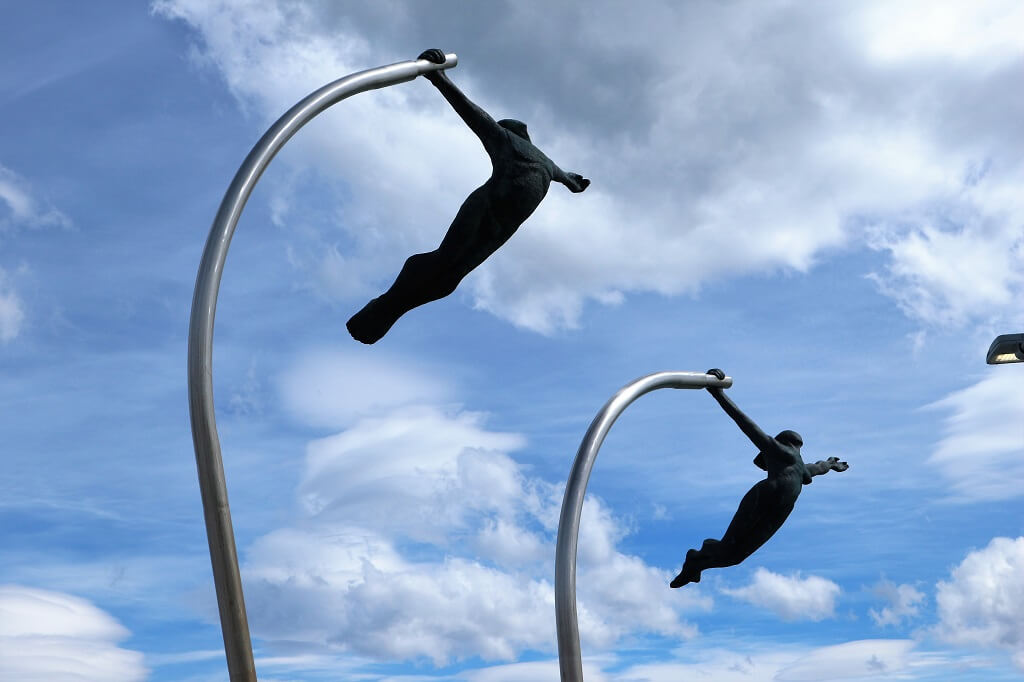
The National Park is a stunning stop on your journey to Patagonia with some of the most breathtaking landscapes on the continent. It is a paradise for hikers wanting to trek the "W" or "O" trails to the top of the three "torres" or towers.
You don't have to be a hiker to enjoy the scenery, wildlife and cuisine of this popular national park. These are attributes that appeal to everyone. Four days including travel is a good amount of time to spend here.
How to Get to Patagonia on Its Argentinian Side
If you are taking the leisurely route to Patagonia on the Argentinian side, you can't miss the town of El Calafate and the nearby amazing Perito Moreno glacier.
Aerolineas Argentinas has regular flights to El Calafate from Buenos Aires (3 1/2 hours), Ushuaia (1 1/2 hours) and the ski resort town of Bariloche (1 1/2 hours)
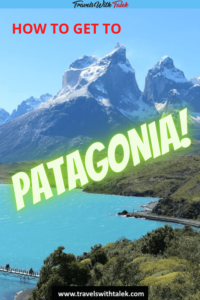
The Perito Moreno glacier in Argentine Patagonia is one of the most spectacular glaciers on earth. It is the focal point of the UNESCO World Heritage site, Los Glaciares National Park in the southern province of Santa Cruz.
The kick-off point for getting to the glacier is the town of El Calafate about an hour and a half away. The town has an interesting vibe to it, kind of a cross between a Swiss mountain village and a western United States ski town.
It is full of little vacation cabins kept by folks wanting a retreat from the big cities in a peaceful and beautiful natural environment.
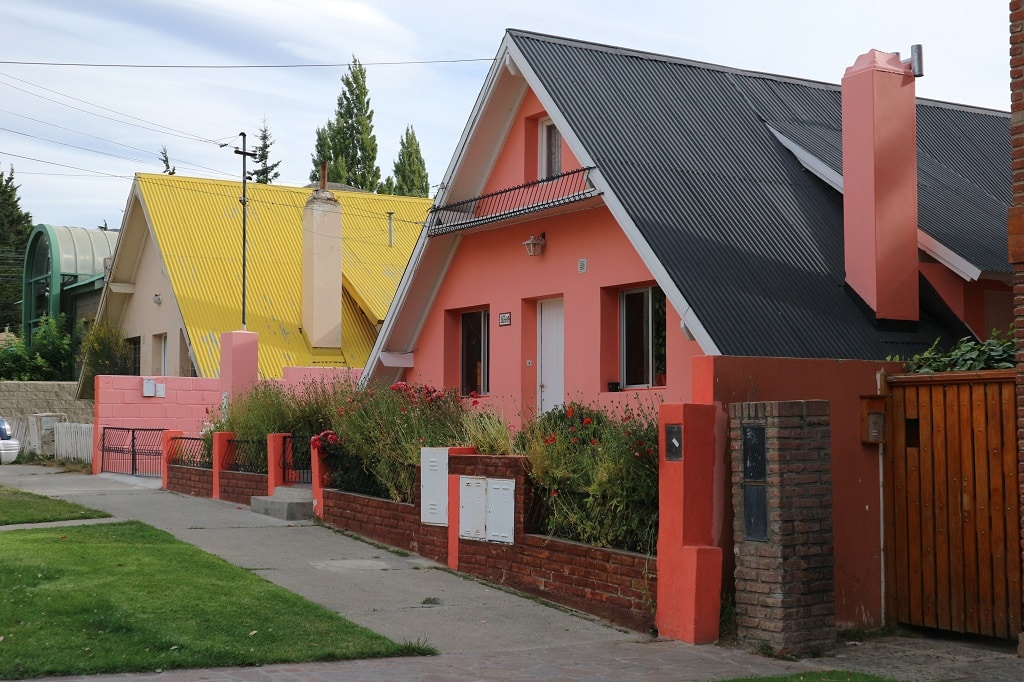
El Calafate was named after the calafate berry native to the region. The berry is almost identical to a blueberry but with a totally different taste.
Many legends in the region reference the calafate but the common thread is that anyone who eats a calafate berry is destined to return to the town.
El Calafate’s main street is lined with interesting little souvenir shops selling every imaginable derivative of the calafate berry; jams, preserves, fragrance, paste, pate and much more.
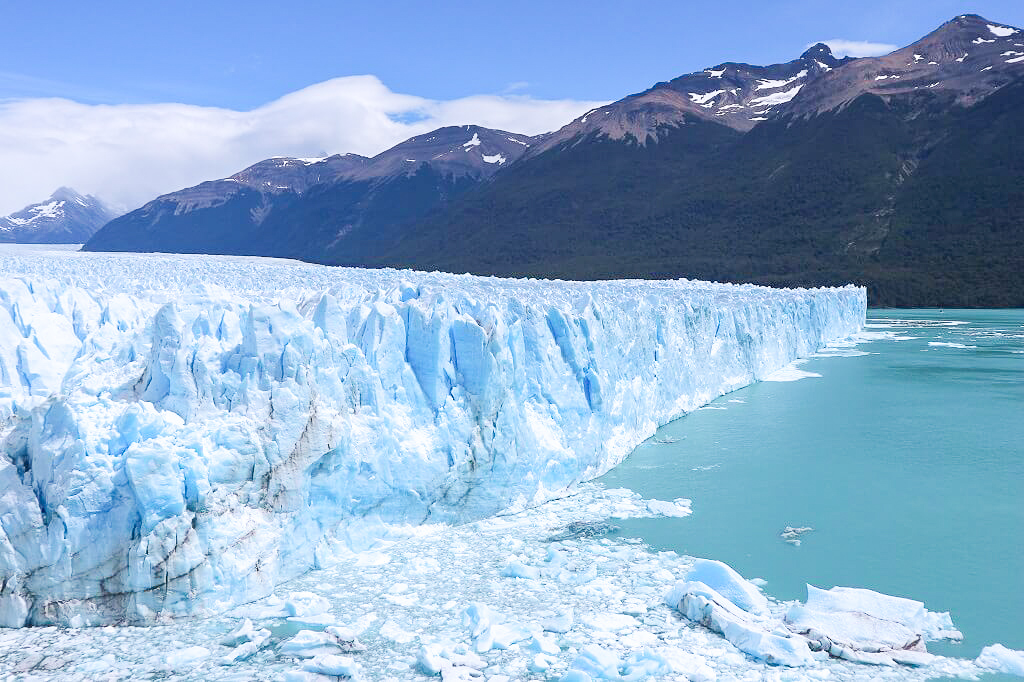
Tours and excursions are also big business in El Calafate. Tour agencies line the main street on both sides. Anyone of these tours will take you to the Glacier National Park and the Perito Moreno.
The Perito Moreno was named after a prominent Argentine scientist that explored the area in the early 1900s. The ice formation is only one of almost 50 glaciers located in the Andes mountains shared with Chile.
This glacier is one of the world’s largest reserve of fresh water. What is unusual about the glacier is that it is advancing, while most glaciers worldwide are retreating. Why? Glaciologists don’t really know.
The end of the Perito Moreno Glacier is 5 km (3.1 miles) wide with an average height of 74 meters (240 ft) above the surface of the water. The depth of the ice beneath the surface is 170 meters (558 ft). This is one massive glacier.
A large, well-designed visitor center at the glacier provides a boardwalk circuit allowing visitors to see the southern and eastern face of the glacier. The optional 30-minute boat ride takes you out to get a close-up view of the glacier and is certainly worth the time.
Since there are so many tour companies offering the same glacier tours, the prices for the tour are pretty much the same. All of them offer the basics; transportation to the National Park, a couple of hours visiting the glacier -about $60 – and an optional boat ride to get a close-up view of the glacier – an additional $40 per person.
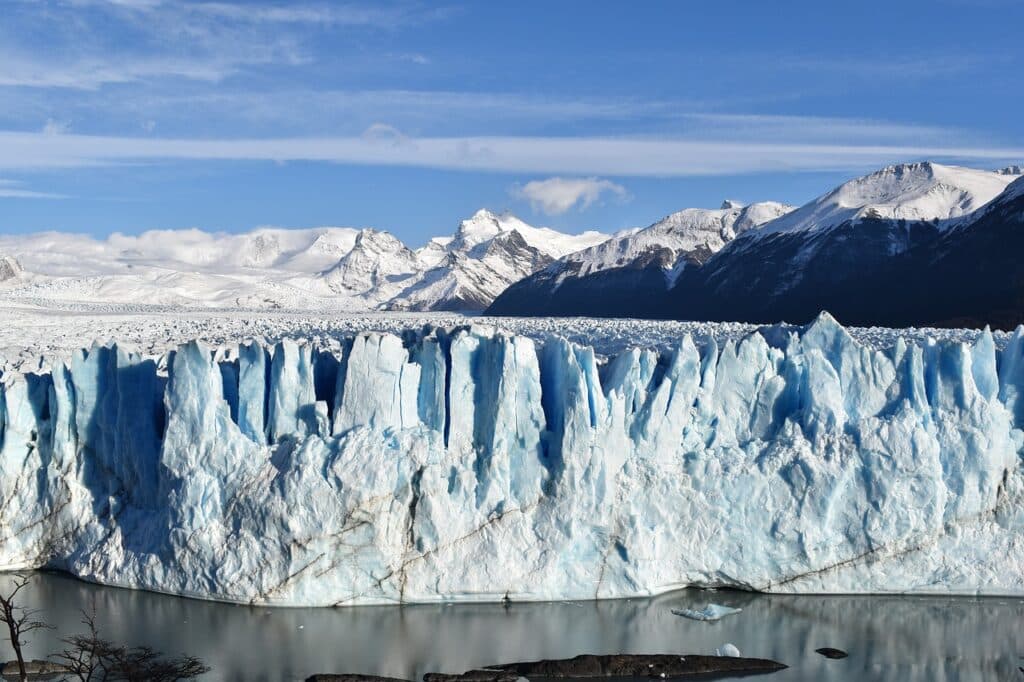
How to get to Perito Moreno glacier from El Calafate on your own? Buses leave regularly from the local El Calafate bus terminal.
A roundtrip ticket cost about US$30. Entrance to the glacier in Los Glaciales National Park is about US$30 not including the optional boat ride to see the glacier up close (very up close.)
The entrance to the national park is about 40 minutes from town. An additional 40 minutes will bring you to El Perito Moreno.
The first sight of the massive glacier is simply astounding. It towers above the cobalt blue glacial waters of Lake Argentino, a mountain of white ice emitting frozen turquoise hues.
Besides seeing the glacier for the first time, a breathtaking sight, perhaps the most impressive part of visiting the glacier is the opportunity to see a “calving.” This is when a portion of the ice breaks away from the glacier and tumbles to the sea.
The calving is accompanied by a loud booming sound – almost like an explosion – that reverberates throughout the area. A large portion of ice will slowly detach itself from the glacier then plunge dramatically into the water.
If you are lucky enough to witness a calving closeup while on the boat, that will be a memorable experience. It is nature at its most majestic and an unforgettable sight on a trip to Patagonia.
Recently the Perito Moreno Glacier tours have started offering trekking on carefully monitored sections of the ice. These tours have been gaining in popularity. One especially popular trek is the mini-trek, a short walk of about an hour. A longer option is about 5 hours.
The tour companies provide customers with essential accessories like crampons.
Tip: Budget three days if you are crossing the border from Chile, two days if traveling within Argentina.
Punta Arenas
Further south in the Chilean Patagonia, about 3 hours south of Puerto Natales, is Punta Arenas. The town once grew rich as the mid-point on the journey between the Atlantic and Pacific oceans.
In 1914 the Panama Canal cut 8,000 miles from that long trip, bypassing the city completely and igniting its decline.
Nevertheless, the vestiges of past splendor can still be seen throughout the city in its elegant architecture, broad avenues and the Sara Braun Municipal Cemetery, one of the most beautiful cemeteries in Latin America.
Punta Arenas is the kick-off point to the depths of the Chilean and Argentinian Patagonia. This is where most cruise ships sail to and from Ushuaia, Argentina as they explore the Straits of Magellan, Beagle Channel and Cape Horn.
The Ventus Australis is a company specializing in cruising the Patagonian waterways.
When sailing these treacherous waters, it is staggering to imagine how the first explorers navigated successfully with their rickety, wooden sail ships.
It is well worth the trip to explore the glaciers, wildlife and landscapes of one of the wildest and least explored places on earth.
Tip: For this trip you should budget four days for the cruise including travel time.
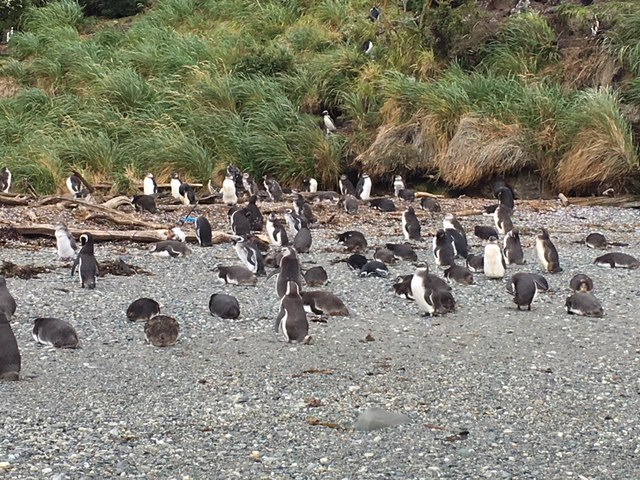
How to Get to Patagonia at the End of the World
Once you reach Ushuaia you have reached the southernmost city on earth and the end of your journey to Patagonia. Ushuaia is literally the town at the end of the world.
Every tourist attraction makes reference to and exploits the city's unique geographic status; end of the world bar, nightclub, hotel, train and more.
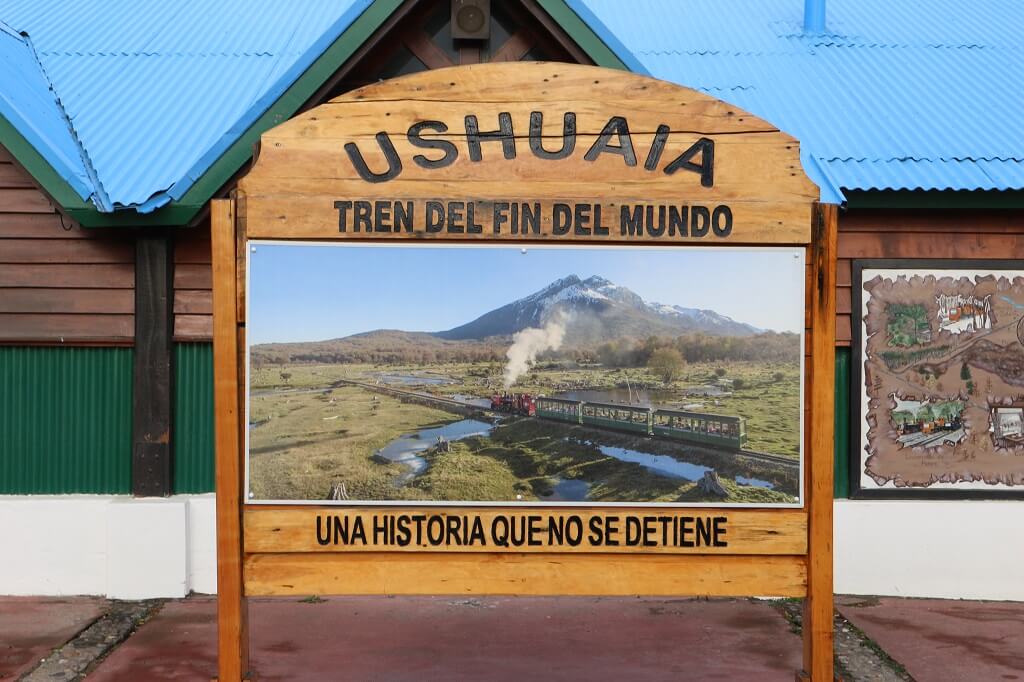
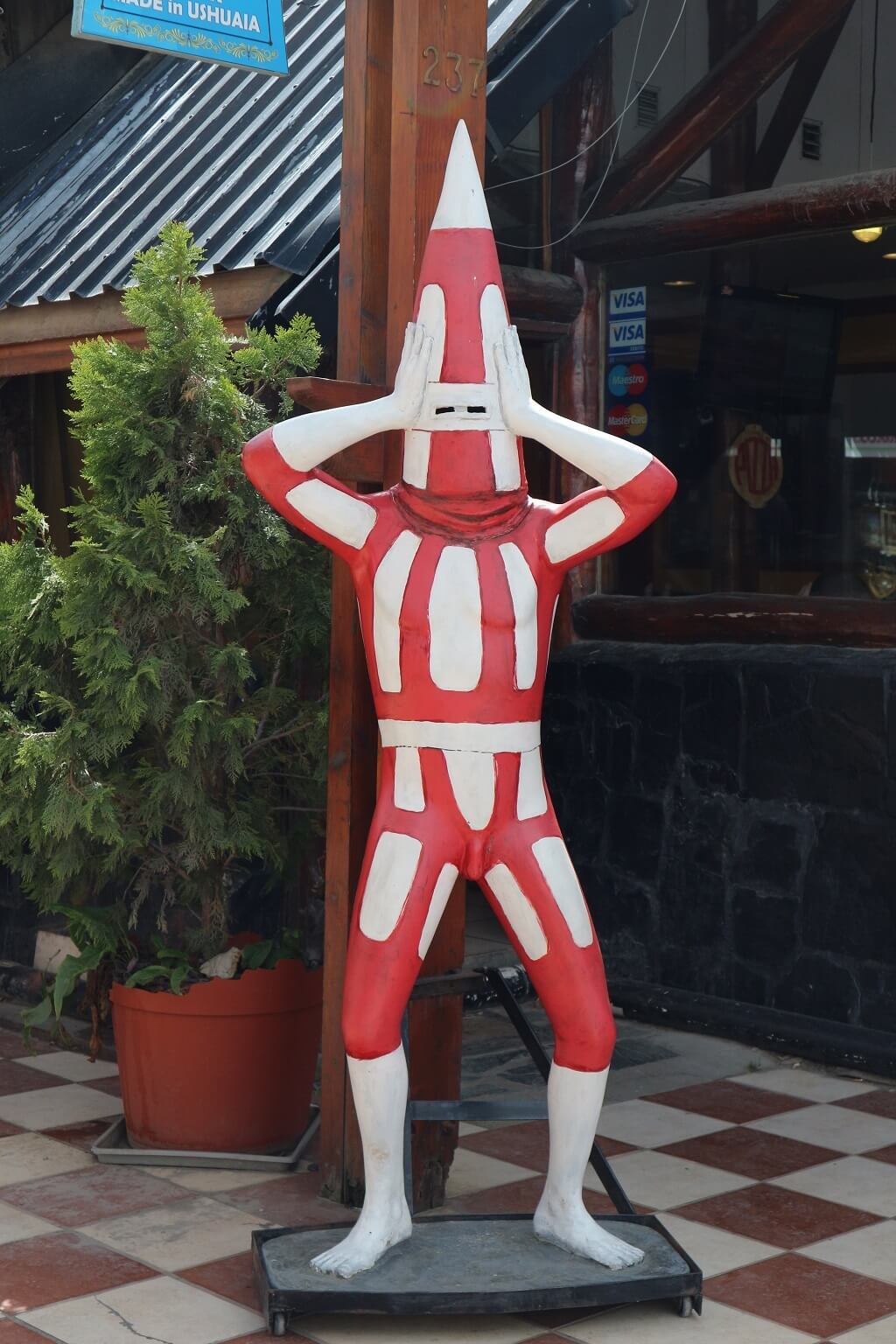
For such a remote town, Ushuaia has a good selection of restaurants and hotels. The cruise ships stop in Ushuaia for a few hours before making the return trip to Punta Arenas.
One of the town's highlights is the prison museum or El Presidio. The exhibit tells the story of when Ushuaia was a remote backwater where Argentine prisoners were exiled to live out their sentences building the local railroads.
The museum is located inside the original prison which has been refurbished and includes interesting exhibits. Budget one full day, no travel time included.
Looking for a place to stay? Check out these accommodations in Ushuaia.
Want to know more about how to get to Patagonia and the activities at the end of the world? Here are excellent books that stands the test of time.
How do you want to get to Patagonia? What was your favorite stop on the journey to Patagonia and why? We'd like to know.
Updated August 2022
Some of the links on this page are affiliate marketing links. If you purchase products through these links I make a small commission at no cost to you.
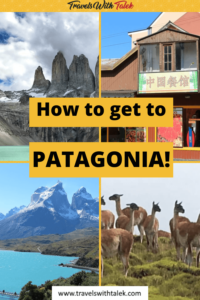
BTW, if you are getting ready for your trip, make sure to take advantage of these useful, money-saving links to book your trip:
- Research and book your flight with Skyscanner. I have found them to be the best because they list all airlines including the budget ones. You are always sure of having researched all options.
- For car rental around the world, Discover Cars has flexible pickup and drop-off options, I recommend Discover Cars.
- Book your accommodation with Booking.com. I find they have a wide selection and a nice, user-friendly, transparent website.
- Protect your trip and, more importantly, protect yourself with travel insurance. I use Travelinsurance.com and have been very happy with them.
- Looking for a small group tour to unforgettable destinations with top professionals? Intrepid Travel is your choice.
- For more general tours to any destination or attraction, book with Viator. Check them out.
- Need a visa? Get your visa for all countries with Passport Visa Express.
- Looking for a cool walking tour to explore a city? My favorite walking tours are offered by Take Walks.
- Food and drink tours are the best way to enjoy a city. And Devour Tours are my favorite.
- Looking for a good VPN to protect your security, privacy and freedom online while traveling? Nordvpn is your best option.
I personally use, and can recommend, all the companies listed here and elsewhere on my blog. By booking through these sites, the small commission we earn - at no cost to you - helps us maintain this site so we can continue to offer our readers valuable travel tips and advice.
























2 thoughts on “HOW TO GET TO PATAGONIA (UNIQUE PATAGONIA ROAD TRIPS)”
Talek, this was the most interesting description of your trip. I felt like I was there on the bus or boat alongside the passengers. Your narrative is interesting, peppered with practical advice. The place names brought back memories of when I worked in Lan Chile’s ticket office in NYC in the 1960’s…… yes, the Sixty’s! Best wishes from Carole in YYZ.
Thanks,Carol! No greater compliment than your kind words. Talek